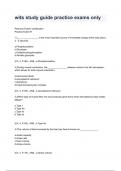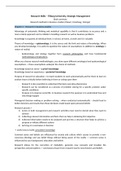Summary
Summary Management accounting third year
- Institution
- University Of Pretoria (UP)
This download consists of all the topics that will be discussed in third year. Especially financing. The summaries are made according to the university of pretoria's standards.
[Show more]









